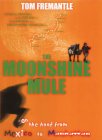I decided to go on a safari in Africa – not so unusual.
However, all of the travel information I was able to dig up
in preparation for this life experience talked about the
game drives during the day and the typical you’ll see this
many giraffes, this many zebra, this many lion, etc. I was
not able to find information on what it was like being out
there in your tent in the middle of the night. But I went
anyway – not knowing. As it turns out that was my favourite
part of the trip.
It’s October, we arrive in Tanzania and eventually make
it to our camp deep in the Serengeti – Kusini Camp run by
Fred and Carol, who are two of the coolest people my
husband and I have ever met. We go out for some game
viewing which is great fun, as expected. Evening starts to
roll around, we have a great dinner, and then relax by the
fire. As we are sitting around the fire listening to Fred’s
crazy hunting stories we hear a slight noise to our right.
As we look over, the Masai tribesman, who is monitoring the
perimeter of the camp for wild animals shines a light on
the stone bird bath not but 10 feet away. There is an
enormous Cape Buffalo drinking from the birdbath. A
magnificent sight up so close. This is when I knew that
night time was going to be the best.
Shortly after, the Masai tribesman with rifle in hand,
escorts my husband and I back to our tent – fully equipped
with a small walkie talkie in case of an emergency. As we
settle down for sleep we notice the unbelievably unique
quiet surrounding us. It’s deafening quiet, however amongst
the quiet you can hear the sounds of Africa. I can’t stand
it anymore. I jump up, grab the spotlight provided, and
start to survey the land around us through the thin mesh
windows of the tent that separate us from them. Under the
magnificent light of the stars in the black sky I am able
to see an elephant slowly moving toward our tent. He
arrives in only a minute or two to graze on the grass
surrounding our temporary canvas residence. He is loud when
he eats and a bit clumsy fooling around in the bush. But
graceful and so close I could smell his dank leathery
breath. I know he could charge at any minute if I went out
and got in his way, but I feel safe inside and am able to
watch him from only a few small feet away.
Later, I wake up to what I consider a roar, and it
wasn’t my husband! This immediately provokes me to get out
the spotlight again. This time I cannot see anything, not
even a set of yellow eyes, but I can hear the roar from
time to time. You just know he’s there. I set up shop by
the opening to my tent waiting for him to emerge. I slept
right there on the wooden floor but never saw him. In any
case, this was surreal enough.
The next night I could barely wait to head back to the
tents. This time I was ready and wanted the entire wild
kingdom at my doorstep. While I lay there I could hear a
lion again. I think he came back – maybe he liked it there
as much as I did. I kept listening until I finally fell
asleep. Fred was able to confirm my suspicions in the
morning – there were lions in our camp.
We headed on the 4th day to a different camp
in the Western part of the Serengeti – Kira Wira camp on
the Grumeti River. During the night at Kira Wira I was also
able to feel the excitement of being out in the wilderness.
Again I awaken halfway into the night. This time to watch a
hippo casually stroll by our tent and then head over to my
Aunt’s tent nearby. The big fellow sauntered through the
bush. I couldn’t believe it – up until this point I had
only seen their heads in the water.
In the morning our Kira Wira friend came to wake us up
with our usual coffee and tea just at sunrise. As he began
to leave our porch he was confronted by a small herd of
about 10 Cape Buffalo that came to graze by our tent or try
to stay safe from the lion and lioness that may start to
get hungry again. We were able to watch these buffalo in
the faint morning light. They were only a few feet away
looking falsely harmless and eating their breakfast.
Our last night we began our tent ritual by sitting on
the bed with all of the tent windows zipped open looking
out at the darkness. A large bat landed on the meshy
“front door”. As it hung out there we watched
its quick tiny movements. All of a sudden a long very furry
blob leapt up on the door and grabbed the bat, whisking it
away into the night. It all happened so fast we are still
not sure what kind of 3 foot Civet or Janet it was that had
been lurking nearby but it was an amazing close to our last
eerie evening.
While the game drives were awe-inspiring across
Tanzania, as I am sure they are all over Africa, I have to
say that by far the most exciting part of the trip was not
knowing what kind of visitor I would have each night and
how close they would venture to mingle with this crazy New
Yorker.
Kusini Camp info:
P.O. Box 427, Arusha, Tanzania
tel: +255 27 2502143
fax: +255 27 2508273
kmkjmz@optonline.net
Discus this article and give feedback in our online forum

